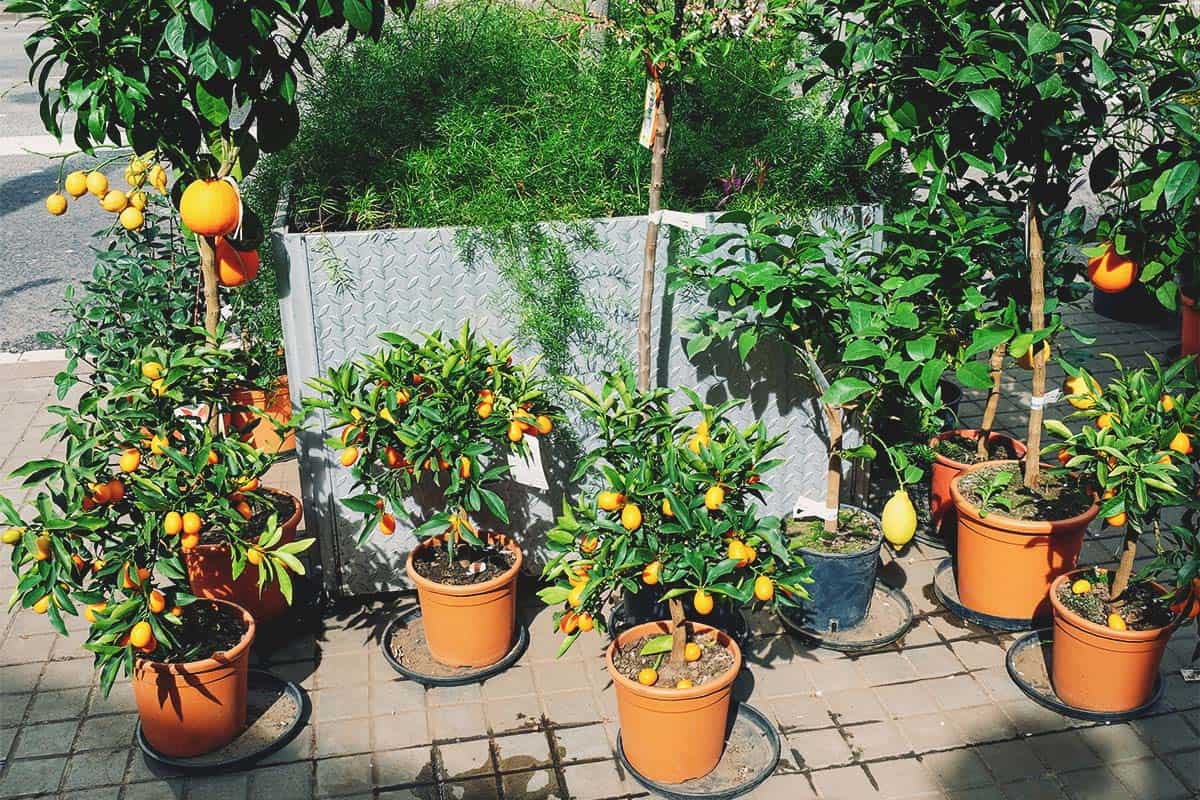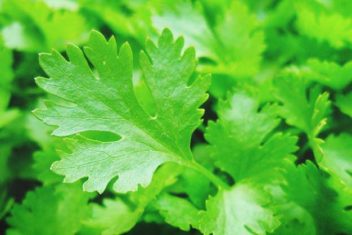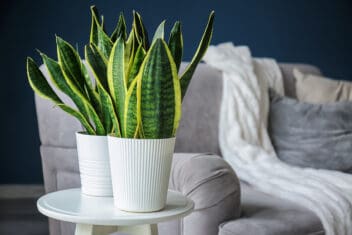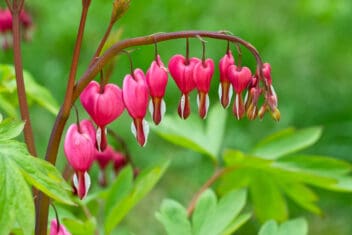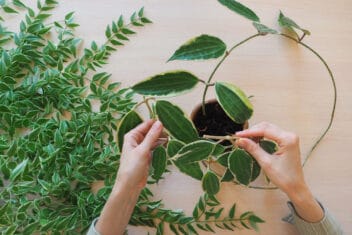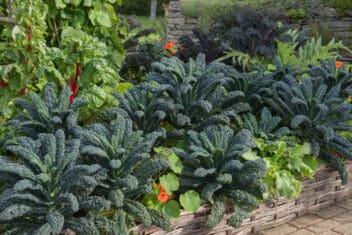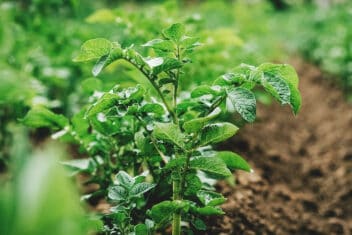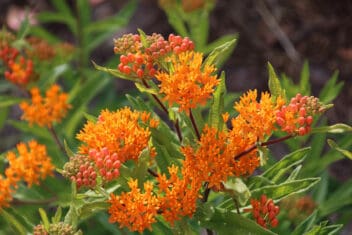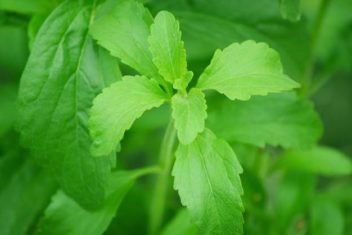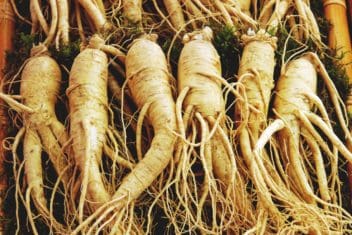I’ve been on my current homestead for 6 years. Many of my standard-sized fruit trees have flowered this spring for the first time ever. Hopefully, that also means they’ll produce fruit.
Unfortunately, there’s no guarantee. With full-sized fruit trees, you can often wait 7 years or longer to see your first piece of fruit.
Thankfully though, not all fruit takes years and years to produce. There are quite a few ways you can fast-track fruit production on your homestead. You can even enjoy some fruit this year if you are lucky!
Let me share a few fast fruit production hacks to speed up producing sumptuous fruit on your homestead.
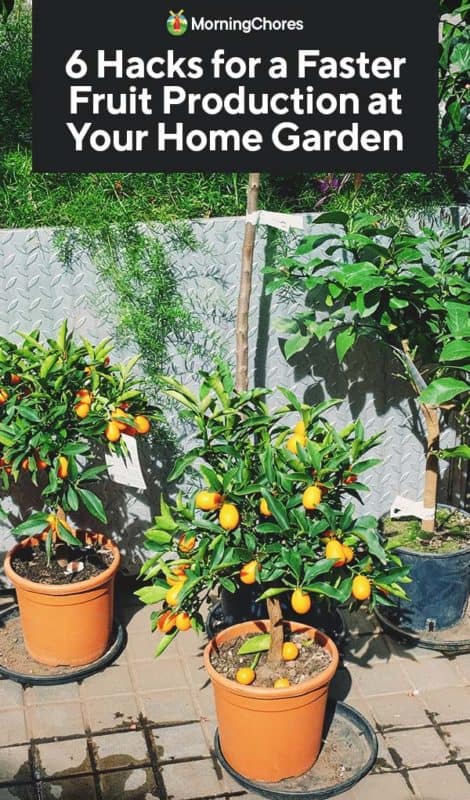
6 Fast Fruit Production Hacks
1. Buy Flowering Potted Fruits
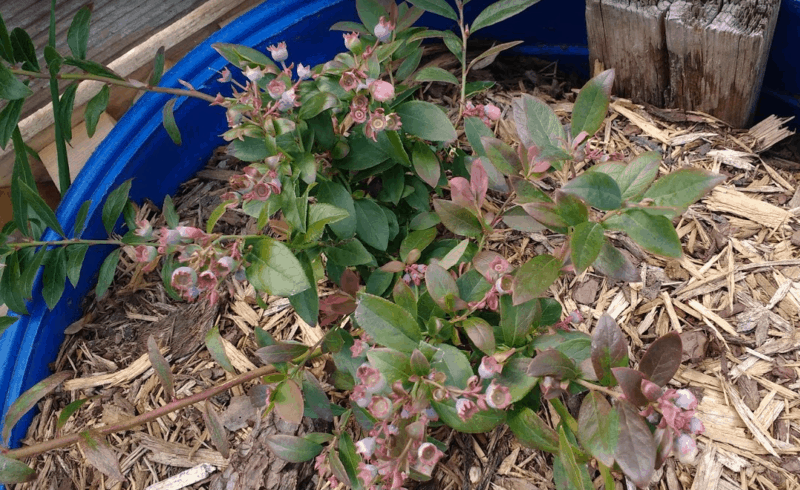
When you find fruit plants at the garden center that are already flowering, that means they are mature enough to set fruit. However, if you take them home and transplant them, you’ll likely give them transplant shock. The stress of being replanted and having their roots disturbed might make them drop their fruit.
So, rather than transplanting them in spring and risking fruit loss, keep them in their pot. Take care of them exactly the way the garden center did. Ask plant sellers for details so you can give plants the same regular watering and fertilizer treatment.
Then, in fall, after you collect their fruit, transplant your new plants in the ground. Fall planting is a lot less stressful for plants in many climates. Also, since plants will have a long time to recover before spring, you’ll likely get fruit next year too!
Plants that are mature enough to fruit typically cost more because they are older. They are also often in larger containers and may be more difficult to get home from the store. Budget wisely and come prepared to protect the flower buds during transport.
Also, note it’s fairly easy to find potted figs, blueberries, and citrus fruits that are ready to fruit the same year. Standard-sized trees ready to fruit, though, can be hard to find.
2. Plant First Year Fruiters

There are quite a few fruits that are vigorous growers and able to bear fruit in their first year of planting. Here are a few:
– Strawberries
Strawberries will fruit the first year planted. For June-bearing varieties, you need to get them in the ground by March or buy them already potted in containers.
But for everbearing strawberries, even if you miss that early spring planting window, you may still get a late summer harvest the first year if you plant in late spring or early summer.
– Primocane Blackberries
Generally, blackberries produce the most fruit on floricanes, or second-year canes. However, there are lots of varieties that will produce fruits on primocanes or first-year canes and help you with fast fruit production. You just need to make sure you pick one specifically known to fruit on first-year canes.
– Primocane Raspberries
Similar to primocane blackberries, there are lots of primocane raspberry varieties. Most of what you find at big box stores are floricane producers. So, you may need to buy online to get first-year fruit-producing raspberries.
– Fig Trees
If you start early and have a late winter, fig trees can sometimes fruit in the first year that you transplant the potted figs you got from the garden center.
If they do produce the first year (a bonus for your fast fruit production hacks), it will likely be just a little bit of fruit in late summer or early fall. But then they’ll be ready to produce lots more fruit the next year.
– Goji Berries
Container grown goji berries started from large root cuttings can sometimes produce the first year. Make sure they are planted in deep, rich soil with a 6.5-7.0 ph. Keep them in full sun too.
Goji can sometimes take up to three years to fruit in less than ideal conditions or when grown in the ground. This is because they are taprooted and put their effort into root growth and expansion before they start fruiting if they sense deeper soil.
3. Grow Dwarf Fruit Varieties
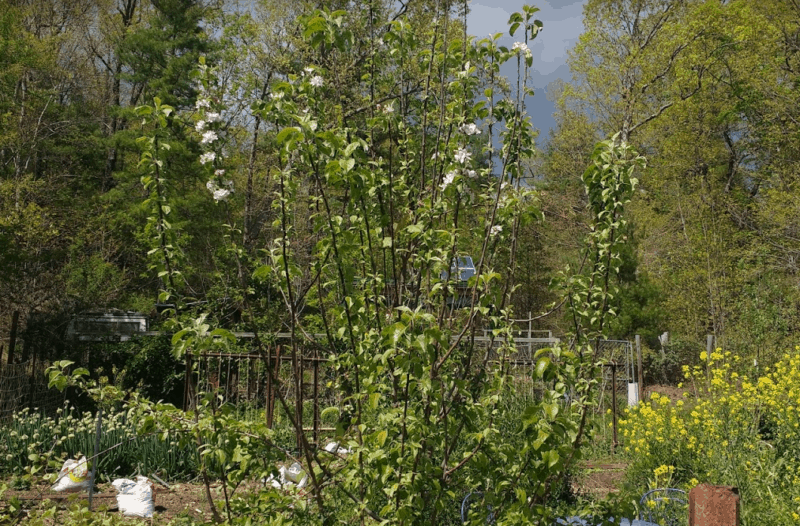
Most fruit trees are grafted rather than grown from seed. This is so they produce the same kind of fruit as their parent plant. Essentially a scion (cutting) from the parent tree is attached to a rootstock.
– Dwarf Rootstock
As long as the graft takes, the rootstock will dictate the size of the tree and the robustness of its root system. But the scion will dictate the flavor, color, and size of the fruit produced with this fast fruit production hack.
This also means that the rootstock will dictate the size and the maturity rate of the tree. For example, apples grown on dwarf rootstock might only grow to 8 feet tall. The same apple grown on standard rootstock will grow to 25 feet tall.
– Faster Fruit, Shorter Tree Life
Since dwarf trees don’t have to put as much energy into growing tall, they will begin to produce fruit a lot earlier than standard-sized fruit trees. The downside to dwarf rootstocks is that they don’t live as long as standard-sized rootstocks.
Though lifespan varies, some dwarf trees will only produce for about 15 years. A standard tree might go on for 50-100 years in the right conditions.
– Continuous Fast Fruit Production
If you start new dwarf trees every few years, though, you can have a continuous supply of fruit on small, easy to maintain trees forever. Or you can start with dwarf trees for early and fast fruit production and mix in a few standard-sized trees for long-term production.
4. Grow Fast Growing Fruits
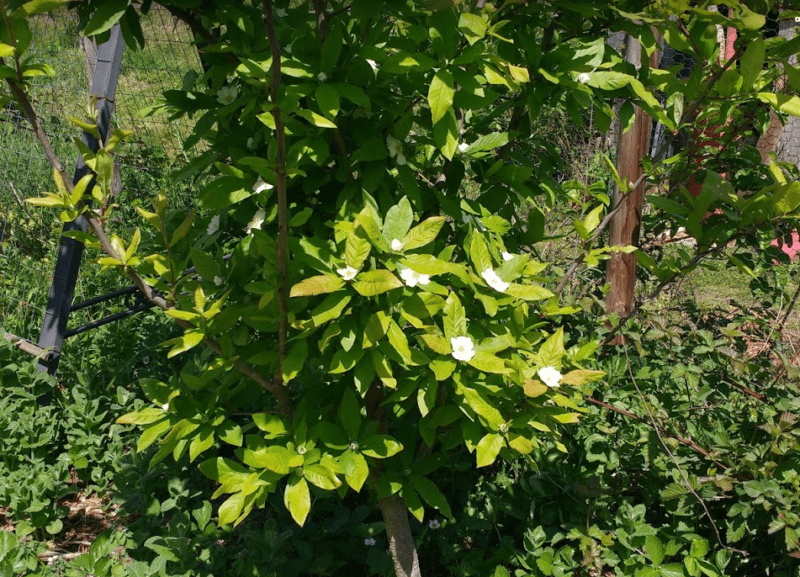
Peaches, pears, plums, citrus, quinces, medlar, and mulberries become highly productive at fruit production faster than most apples, blueberries, kiwis, or jujubes. Also, except for hazelnuts, almost every stone fruit will beat a nut tree in terms of years to harvest.
So, if you want big production in a hurry, skip slower-growing fruits and opt for varieties described as being able to produce in 2-4 years.
5. Over Graft Older Rootstock
You can also graft your own fruit onto older rootstock. For example, if you have some wild grapes growing your yard, you might try to graft a better-tasting table variety onto your established wild grape stock.
If you have a crabapple in your yard, you might over graft some of the branches with other varieties. Grafting isn’t that difficult, but it does take a little skill with a sharp cutter.
Also grafted plants are traumatized for a while, so you’ll need to baby them a bit. Yet, if the graft takes you can get the benefit of faster fruit.
6. Plant Appropriately
Regardless of which kinds of fruit you plant, you will only get fruit production if you choose varieties that are well-adapted for your climate. You also need to give them excellent care for the first few years until they establish deep root networks.
If you give your trees perfect conditions and excellent care, even slower growing varieties will produce sooner than plants that don’t have a great start or live in stressful conditions.
Fast Fruit Production & Problem Solving
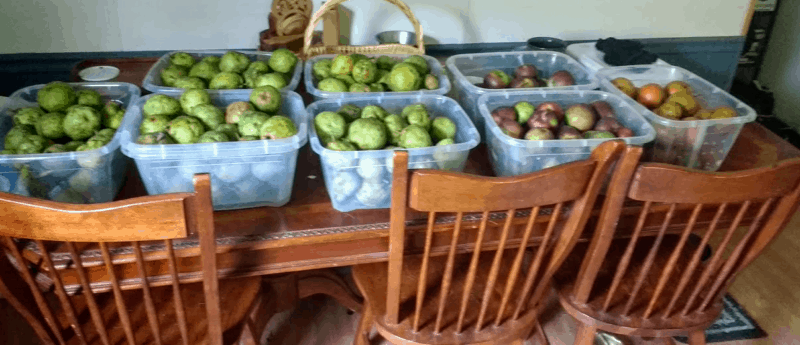
Of course, once you get over the planting, caring, and waiting for fruit hurdles, then you have to figure out how to process, preserve, and use all that delicious homestead fruit. Plus, if you do what I did and fast-track fruit production and plant slower-growing standard varieties, you might find yourself with more fruit than you know what to do with 6-7 years down the road.
Honestly, though, having to figure out how to deal with all your abundant fruit — well, isn’t that a lovely problem to have?
